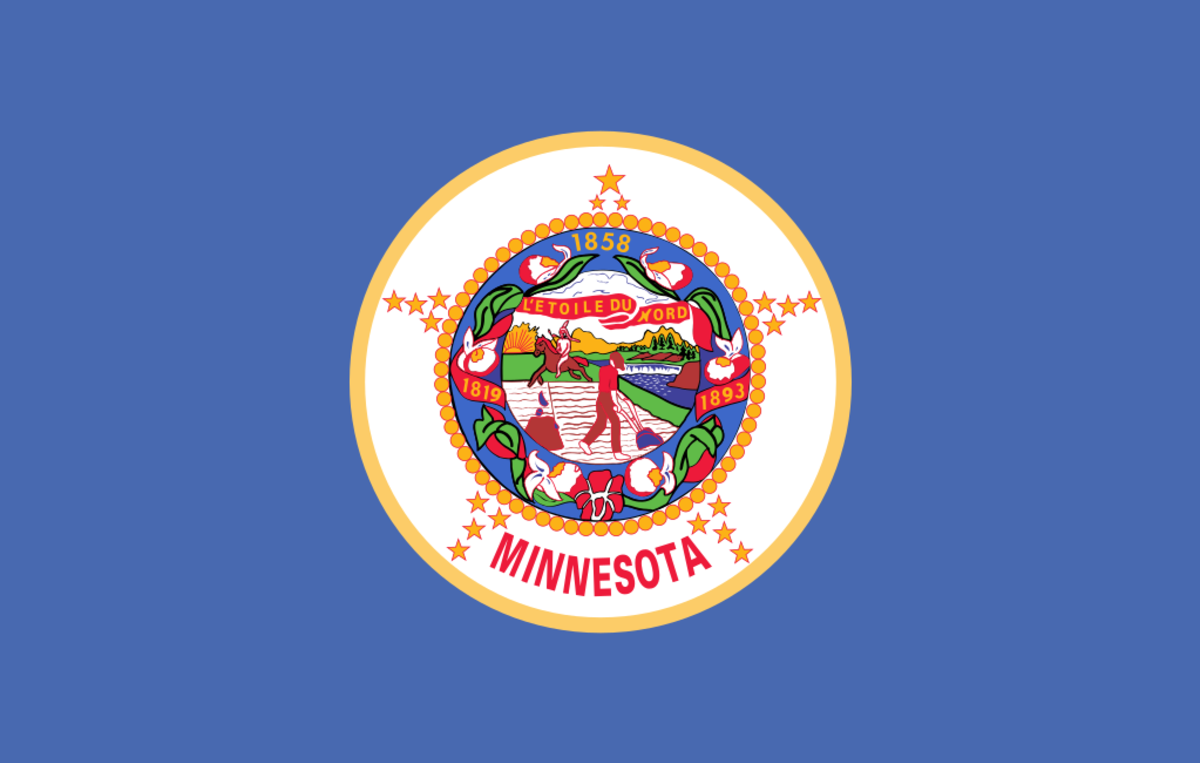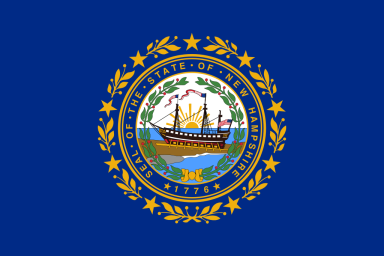Minnesota Workers’ Compensation Laws

The industrialization and urbanization in Minnesota in the early 1900s, which saw growth in farming, lumbering, mining, and railroad construction, helped boost the economy of the state. During the period, accidents in workplace settings became rampant due to poor working conditions and environments, and the employees were obviously the ones who suffered the most. Workers did not have a remedy available for their work-related injuries outside the tort system until the Minnesota Workers' Compensation Act was adopted in 1913.
Today, employees are protected by the workers' comp laws when injuries or occupational diseases occur. However, the state continues to see significant numbers of workplace-related injuries, illnesses, and deaths. Federal and state departments revealed that Minnesota had 63,800 nonfatal injuries and 80 fatalities in 2021.
The industries that reported the highest deaths were trade, transportation, and utilities; construction; and agriculture, forestry, fishing, and hunting, with 22, 18, and 11 cases, respectively. Roadway accidents, slips and falls, and violence contributed the most to those fatalities.
The workers' compensation claims process can be complex and time-consuming, especially if you are not equipped with a proper understanding of the state's legislation. This article will help you comprehend the guidelines and requirements that you need to follow if you intend to file a workers' compensation claim in Minnesota.
Minnesota Workers’ Compensation Insurance Requirements
Workers' compensation serves as a no-fault scheme that provides employees with benefits while they recover from work-related injuries or illnesses. Every employer in the state is required to carry workers' comp insurance, often referred to as "mandatory coverage," if they have at least one full-time, part-time, or seasonal employee. Minnesota's workers' compensation law also indicates that certain volunteer workers are entitled to workers' comp benefits. They include the following:
Social services program volunteers;
Emergency management volunteers;
Non-emergency first responders and law enforcement volunteers;
Non-emergency ambulance staff volunteers.
Ways Businesses in Minnesota Can Obtain Workers' Compensation Insurance
Minnesota employers can purchase workers' comp insurance policies through an insurance agent or company. They can verify whether the agent or company they are transacting with has a valid license through the State Commerce Department's License Lookup Directory platform.
If the business is unable to obtain insurance in the market, it can apply for assigned risk-plan coverage with the help of the Minnesota Workers' Compensation Insurers Association.
Companies also have the option to self-insure and abide by the workers' compensation requirements as long as they fulfill every financial requirement.
Other Minnesota Workers' Compensation Rules
Extraterritorial Application and Temporary Out-of-State Employment
If you have been injured while performing your regular tasks for a Minnesota employer outside of the state, you are entitled to the same benefits as those employees who are hurt within the state, given that the law's extraterritorial application or temporary out-of-state employment requirements are met.
Employees who routinely carry out their major job responsibilities within the state but have sustained an injury while working for the same employer outside the state fall under the extraterritorial application category. Temporary out-of-state employment, on the other hand, applies to workers who have been hired in Minnesota but got hurt while temporarily employed outside of the state.
Workers' Compensation Poster
According to Minnesota law, all employers must post a copy of the state’s workers’ compensation notice in a visible location inside their workplace. The poster contains step-by-step procedures that injured workers should follow.
Penalties for Workers' Comp Noncompliance in Minnesota
The Department of Labor and Industry fines employers without workers' compensation insurance, regardless of whether or not an injury has occurred, up to $1,000 for each staff member each week without coverage. They will also be prohibited from hiring new people without purchasing a policy first.
Sanctioned companies have 10 days to comply with or object to an order from the department. If not contested within the set timeline, the order will be considered final, which will warrant harsher consequences.
In the event an employee gets injured while not covered by workers' comp insurance, they may apply to the state's Special Compensation Fund to pay the required benefits. Once a compensation judge orders the fund to pay the benefits, the employer might be obliged to reimburse the total amount of benefits along with a penalty amounting to 65% of those awards.
Additionally, if your employer is operating a business without the appropriate workers' comp coverage, you can report it to the Special Compensation Fund unit of Minnesota's Labor and Industry Department.
Minnesota Workers’ Compensation Benefits
Injured workers are eligible to be compensated for the costs and expenses related to their injury and recovery. However, traumatic injuries, repetitive-type injuries, occupational diseases, and qualifying mental injuries like PTSD are the only types of injuries that the law recognizes.
In Minnesota, an employee will not be able to receive workers' compensation benefits if their injuries are non-work-related. This means that insurance policies do not cover self-inflicted injuries or those brought on by reckless behavior.
If you have sustained any of the above-mentioned injuries or illnesses, you will be tasked with proving that your employment obligations contributed to your disability. Here are the workers' comp benefits that you may receive:
Medical Benefits. If you have sustained a work injury, your employer is responsible for paying for your medical treatment, including hospital, surgical, psychological, podiatric, and chiropractic treatment. It will also shoulder the cost of the medicines and supplies needed to cure or relieve the effects of your injury or illness.
If you own a pair of eyeglasses, hearing aids, dentures, canes, or wheelchairs and they get damaged during a workplace accident, your employer will be required to shell out money for their repair or replacement.
Moreover, other expenses will require financial support from your employer when you are injured. These include the costs of medical reports, travel and parking costs, copying charges, and, in some cases, attorney fees. If you or your employer want to seek a second opinion about a recommended surgery, the cost of having it obtained will be paid by the employer.
Your company's insurer may have a designated pharmacy or pharmacies where you can only get medicine and medical supplies. These are typically situated within 15 miles of your residence.
On the other hand, you, as the injured employee, must ensure your physician furnishes your employer's insurance provider with copies of all of your bills and supporting documents, which explain the treatment and charges related to your injury or illness.
Wage Loss Benefits. In Minnesota, you may only receive wage loss benefits if you suffered a disability due to a workplace injury that prevented you from working for three consecutive days. In the event that your disability extends to 10 calendar days, you will be entitled to the wage loss payment for the entirety of the time that you were unable to work.
There are different types of disability benefits in the state. The table below discusses their indications and differences.
Vocational Rehabilitation Benefits. Minnesota's workers' comp statute also aims to help injured workers get a job related to their former work or another job that allows them to earn a living at a level close to their pre-injury economic status. Under the law, injured employees will receive assistance from a qualified rehabilitation consultant on matters including retraining, on-the-job training, and job placement.
Death and Dependency Benefits. If death becomes a result of a workplace mishap or occupational disease, the spouse or any living dependent is eligible for benefits, including unpaid PPD and dependency benefits. The insurer will also pay a maximum amount of $15,000 in burial expenses to the victim's family. If the deceased worker has no dependents, the benefits will be paid to the estate.
Third-Party Claims
If you have suffered an injury at work due to the negligence of a third-party entity, such as a driver causing a road accident or a manufacturer of a defective product or equipment, you have the option to file a personal injury claim against them. Meanwhile, if your injury resulted from the shared negligence of your employer and a third party, you can file for both workers' compensation and personal injury claims.
How to File a Workers’ Compensation Claim in Minnesota
The workers' compensation claim procedure in Minnesota, just like in any other state, requires cooperation between the affected employee and employer. Both should follow the rules and timelines to ensure a prompt resolution. If you are having difficulty recalling the step-by-step procedure and required documents, you may seek the assistance of a workers' comp attorney.
When is the Deadline for Workers’ Compensation Claims in Minnesota?
Individuals filing workers' compensation claims must abide by the statute of limitations. Minnesota's deadline for workers' comp claims is three years from the date your employer filed a First Report of Injury with the commissioner of the state's labor and industry department. If no report was made within the set timeframe, you will have six years from the date of the workplace accident to file a lawsuit to recover the compensation you deserve.
A Step-by-Step Guide to Filing a Workers’ Compensation Claim in Minnesota
1. Notify Your Employer of Your Injury.
Report your work-related injury or illness as soon as you have sustained or discovered it. Preferably, you must inform your employer within 14 days of the workplace accident. You have up to 180 days to make the report. If you fail to report your injury within the timeframe, you might lose your chance of receiving your workers' compensation benefits.
2. Seek Medical Attention.
Get medical care from a healthcare facility or hospital as soon as you encounter a workplace accident that results in an injury. For emergencies, you or your colleague should contact an ambulance service provider. Under Minnesota's workers' compensation insurance legislation, supervisors or coworkers are not allowed to transport an injured employee to the hospital. Once you reach the medical facility, you should inform the doctor that you are getting treated for a workers' compensation injury. Provide them with the following information:
How the injury occurred
When the injury happened
Your symptoms
Employer information
Your supervisor's name and contact information
Your company's insurance provider.
Your physician will assess you and discuss your treatment plan with you. They will also complete a Report of Work Ability form explaining your physical limitations following your workplace injury. Copies of the form should be sent to your employer and insurer promptly to ensure you do not miss out on your benefits.
3. File a First Report of Injury.
After you have notified your employer about your work-related injury or illness and the days you were unable to report to work, they have 10 days to file a First Report of Injury with their insurance provider.
4. Wait for the Approval or Denial.
Your employer's insurer must also inform the Minnesota Department of Labor and Industry about the workers' comp claim that you have initiated 10 days after your employer's submission of the First Report of Injury. The insurer will conduct an investigation to determine whether you are eligible for workers' compensation benefits. Once they have made their decision, you will be notified, through a Notice of Insurer’s Primary Liability Determination form, whether your claim was approved or denied.
5. Appeal the Insurer's Decision.
If your workers' compensation claim was denied by your employer or insurance provider, you have the option to appeal the decision. But first, you must understand the reason why the insurer decided to deny your claim. After carefully reading the notice, you may reach out to the insurance claims adjuster who is handling your claim to ask for a reconsideration.
If your concern remains unaddressed after your discussion with the adjuster, you may file an Employee's Claim Petition form with the Office of Administrative Hearings. A compensation judge will then handle the issue, which may go through an administrative conference, settlement conference, pretrial conference, and hearing. More details about this will be discussed in the next section.
What Should One Do If a Workers’ Compensation Claim in Minnesota Has Been Denied?
It is your right to appeal a denied workers' compensation claim. You just need to file an Employee's Claim Petition with the Office of Administrative Hearings, which will assign a compensation judge to your case. If the matter is not resolved in settlement conferences or mediation efforts, hearings will be scheduled, wherein both parties will be given a chance to prove their arguments. The judge will release a Findings and Order, discussing their decision on the matter.
However, if the compensation judge affirms the denial and you still disagree, you can file a notice of appeal within 30 days from the date the notice was served by OAH. The Workers' Compensation Court of Appeals will handle the appeal and has the authority to uphold, reverse, remand, or modify the compensation judge's order. If still denied, you can appeal the WCCA's decision to the Minnesota Supreme Court.
Legal Resources for Injured Workers in Minnesota
If you intend to file a workers' compensation claim after you have been injured or fallen sick due to a workplace accident or dangerous working environment but do not know how or where to start, this section offers you some resources that might help you with your claim.
Minnesota Lawyer Referral and Information Service
The Minnesota Lawyer Referral and Information Service is a nonprofit organization that offers legal assistance to residents across the state who require counsel or representation on certain issues. It helps clients find the right lawyer who can assist them in understanding their legal matters, including workers' compensation and personal injury.
LawHelpMN.org
LawHelpMN offers self-help resources that provide pertinent information about various legal matters, including workers' compensation. It has a fact sheet about work safety and getting hurt at work, which answers some of the commonly asked questions about the rights of workers when the job is unsafe, how to report a poor working environment, and what to do when an injury occurs at work. It also offers a copy of the form used when reporting an employer without workers' compensation coverage
Minnesota Department of Labor and Industry
The Minnesota Department of Labor and Industry oversees the work and living environments of workers across Minnesota, ensuring they are equitable, safe, and healthy. It is responsible for the state's programs, such as workers' compensation, occupational health and safety, wage and hour standards, and apprenticeship.
Occupational Safety and Health Administration
The Occupational Safety and Health Administration enforces safety regulations for businesses across the country. Employees are encouraged to file a health and safety complaint if their company is not abiding by the department's standards. If you need further assistance, you can get in touch with the OSHA office near you.
Expertise.com StaffAuthor
Step into the world of Expertise.com, your go-to hub for credible insights. We don't take accuracy lightly around here. Our squad of expert reviewers, each a maestro in their field, has given the green light to every single article you'll find. From rigorous fact-checking to meticulous evaluations of service providers, we've got it all covered. So feel free to dive in and explore. The information you'll uncover has been stamped with the seal of approval by our top-notch experts.




